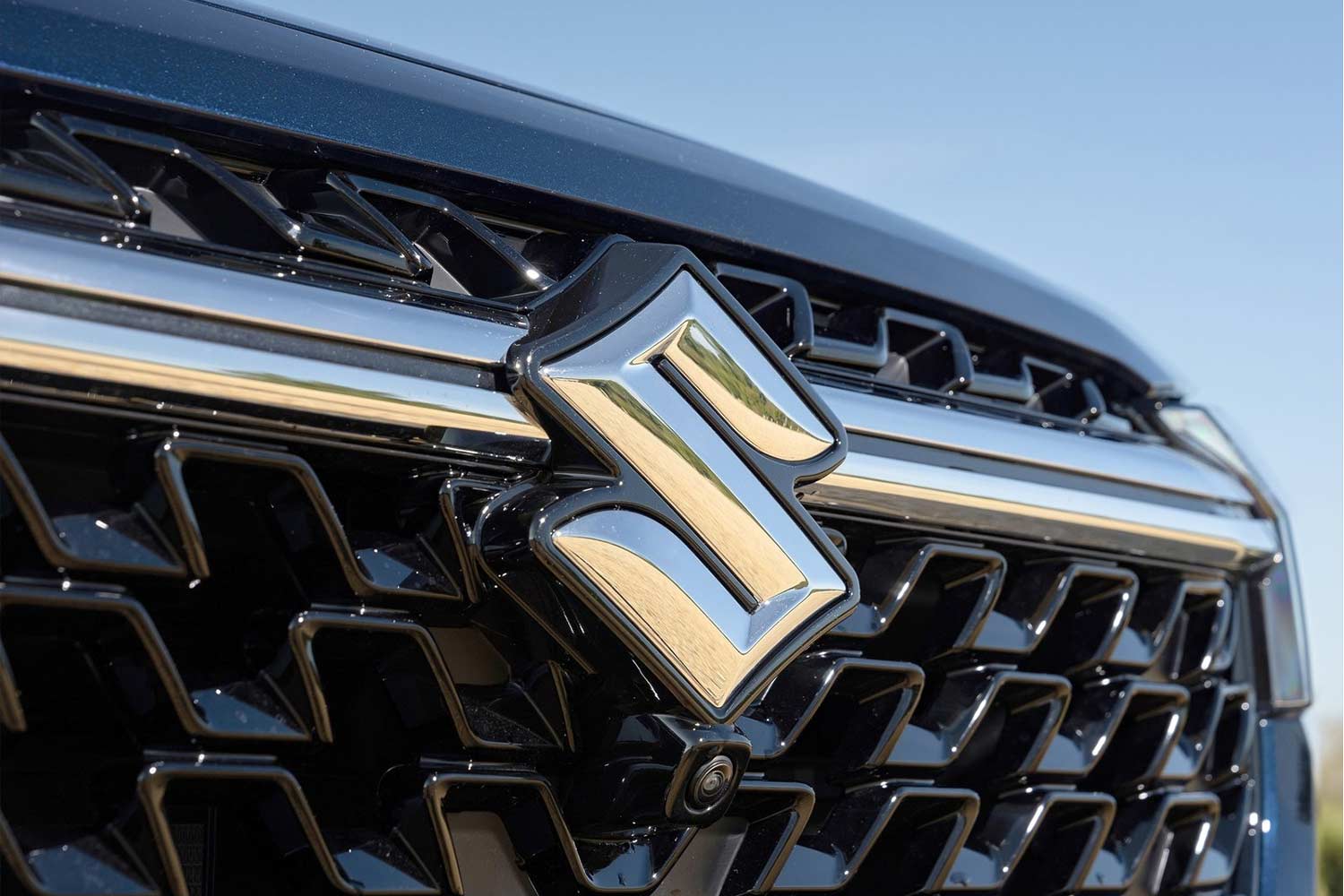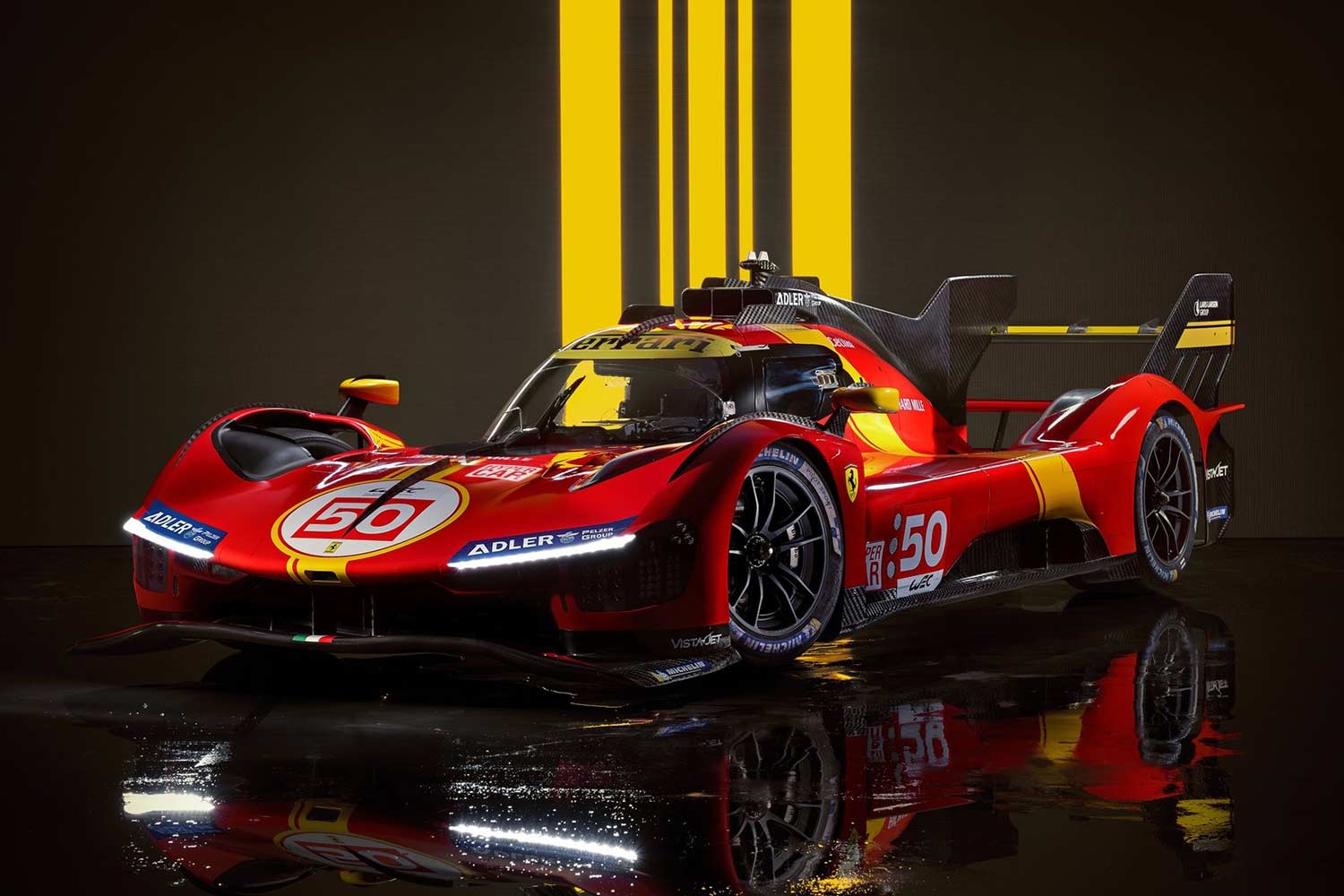Ferrari has introduced its first series production PHEV (Plug-in Hybrid Electric Vehicle), the SF90 Stradale. With its introduction, for the first time, a V8 engine is in the top-of-the-range model.
The Ferrari SF90 Stradale makes 1,000 cv. The supercar has a 90° V8 turbo engine capable of delivering 780 cv, the highest power output of any 8-cylinder engine in Ferrari history. The engine also delivers 800 Nm of torque at 6,000 rpm.
The remaining 220 cv is delivered by three electric motors. One motor is placed at the rear, known as the MGUK (Motor Generator Unit, Kinetic) due to its derivation from the Formula 1 application, located between the engine and the new 8-speed dual-clutch transmission on the rear axle. The other two motors are placed on the front axle.
A high-performance Li-ion battery provides power to all three motors and guarantees a 25-kilometre range in all-electric eDrive mode, using just the front axle. When the internal combustion engine is turned off, the two independent front motors deliver a maximum speed of 135 km/h.
The SF90 Stradale is also the first Ferrari sports car to be equipped with 4WD. This was a necessary step to allow the incredible power unleashed by the hybrid powertrain to be fully exploited, The hybrid supercar can accelerate from 0-100km/h in 2.5 sec and do 0-200km/h in just 6.7 seconds.
The Ferrari SF90 Stradale comes with a full-electric front axle, known as the RAC-e (electronic cornering set-up regulator). As well as exclusively providing propulsion in electric drive, the two front motors independently control the torque delivered to the two wheels, extending the concept of Torque Vectoring. Fully integrated into the car’s vehicle dynamics controls, the RAC-e governs the distribution of torque, making driving on the limit much simpler and easier.
The SF90 Stradale gets the eManettino, an additional steering wheel-mounted selector which is used to set the electronic vehicle dynamics the driver can choose from four different power unit management modes – eDrive, Hybrid, Performance and Qualify.
Ferrari engineers also developed the new eSSC (electronic Side Slip Control) vehicle control system. The eSSC introduces three dynamic regulation and distribution strategies for engine torque to all four wheels – Electric Traction Control (eTC), Brake-by-wire control with ABS/EBD and Torque Vectoring.
The chassis and bodyshell of the Ferrari SF90 Stradale is all new, built using multi-material technology to manage the additional 270 kg weight due to the introduction of the hybrid architecture. In-depth research was carried out to ensure that the overall weight of the hybrid supercar was kept to 1,570 kg.
The aerodynamics department worked closely with Ferrari Design team to generate 390 kg of downforce at 250 km/h, making the Ferrari SF90 Stradale the new benchmark for downforce and aerodynamic efficiency in high-performance road cars.
In terms of design, the Ferrari SF90 Stradale’s engine cover has been kept extremely low to improve the interaction between the flows over and under the body, and thus minimise drag. The end section of the engine cover features a suspended wing divided into two sections: one fixed, which incorporates the third brake light, and one mobile with a wedge-shaped front area. The latter has been dubbed the shut-off Gurney and is under patent.
Rear downforce is balanced at the front of the car by a complex and optimised system of vortex generators. The front bumper is divided into two sections that have specific wing functions. Between the upper section and the bonnet is a pronounced indent that locally compresses the flow. This feature, together with the two diffusers ahead of the front wheels, contributes to generating downforce over the front axle.
The internal combustion engine, gearbox, turbo-charged air, battery pack and electric motors, the inverters and charging systems and brakes all need cooling. Meticulous attention was paid to the design of the engine bay which houses both the usual internal combustion engine systems that generate temperatures of nearly 900°C, and highly temperature-sensitive electronic components.
The coolant for the internal combustion engine and the gearbox (high-temperature circuit) is cooled by two radiators located ahead of the front wheels. The hot air flow coming off those radiators is channelled into the side areas of the underbody rather than along the car’s flanks. The electric motors and the inverters are cooled by a separate circuit with its own radiator at the front of the car with a central intake on the front bumper.
The cooling circuit for the brakes was completely redesigned to meet the demands of the car’s additional performance. In close collaboration with Brembo, Ferrari developed a new brake calliper for the front which is being used for the very first time on a road car. The calliper has an integrated aerodynamic appendage which distributes the highly charged air flow from the special air intake directly under the headlights on the front bumpers, more efficiently to the brake pads and disc. The rear brakes are cooled by the flow from two air intakes on the underbody near the rear wheels.
Specific aerodynamic research went into the geometry of the forged wheels of the Ferrari SF90 Stradale. They are made using a construction technology that allows greater freedom when it comes to aerodynamic solutions. The specific geometry of the wheels incorporates radial elements on the outer channel which are equally spaced between the spokes and designed to act as wing profiles.
Another first for Ferrari, the SF90 Stradale uses matrix LED headlight technology to improve visibility in all driving conditions thanks to active beam control. This time the designers have moved away from the L-shaped headlamp look, to a slender slit design integrated with the brake air intakes resulting in a characteristic C-shape which lends the front of the car an original and futuristic appeal.
The rear of the car is dominated by high exhaust pipes which are the result of optimisation of the exhaust line layout. Another deviation from the styling typical of past berlinettas is the way the profile of the rear screen no longer follows the line from the roof to the rear bumper. This element of styling discontinuity is evidenced by the separation of the screen from the cooling grille.
The tail lights have also evolved quite radically from Ferrari’s iconic round shape. The eye-catching, more horizontal luminous rings create a more horizontal perception of the tail lights which in turn visually lowers the height of the tail.
The interior of the Ferrari SF90 Stradale was designed to create a cockpit that ushers in an entirely new design direction, the effects of which would carry over into Ferrari’s entire future range. The focus was given on creating a wraparound aeronautically-inspired cockpit with particular emphasis on instruments.
In another first for a Ferrari, the central instrument cluster comprises a single 16-inch digital HD screen which curves towards the driver to make it easier to read and to emphasise the F1-style wrap-around cockpit effect. This is also the first time this type of screen has been adopted in a production car.
The Head-Up Display is another part of the innovative HMI and allows various data to be projected onto the windshield within the driver’s field of vision so that their attention is not distracted from driving.
Ferrari SF90 Stradale Images:
Ferrari SF90 Stradale Technical Specifications:
Internal combustion engine
Type: V8 – 90° – turbo – dry sump
Total displacement: 3990 cc
Maximum power output: 574 kW (780 cv) @ 7500 rpm
Max torque: 800 Nm @ 6000 rpm
Specific power output: 195 cv/l
Max. engine speed: 8000 rpm
Compression ratio: 9.5:1
Hybrid system
Maximum power electric motors: 162 kW (220 cv)
Battery capacity: 7.9 kWh
Max. range under electric power: 25 km
Dimensions and weight
Length: 4710 mm
Width: 1972 mm
Height: 1186 mm
Wheelbase: 2650 mm
Front track: 1679 mm
Rear track: 1652 mm
Dry weight: 1570 kg
Weight distribution
Front: 45%
Rear: 55%
Boot capacity: 74 l
Rear shelf capacity: 20 l
Fuel tank capacity: 68 l (2 reserve)
Tyres
Front: 255/35 ZR 20 J9.5
Rear: 315/30 ZR 20 J11.5
Brakes
Front: 398 x 223 x 38 mm
Rear: 360 x 233 x 32 mm
Transmission and gearbox: 8-speed, F1 dual-clutch transmission
Electronic controls
eSSC: E4WD (eTC, eDiff3), SCME-Frs, FDE2.0, EPS, high performance ABS/EBD with energy recovery
Performance
Maximum speed: 340 km/h
0-100 km/h: 2.5 s
0-200 km/h: 6.7 s
100-0 km/h: <29.5 m
Dry weight/power: 1.57 kg/cv
Laptime at Fiorano: 79s

















































